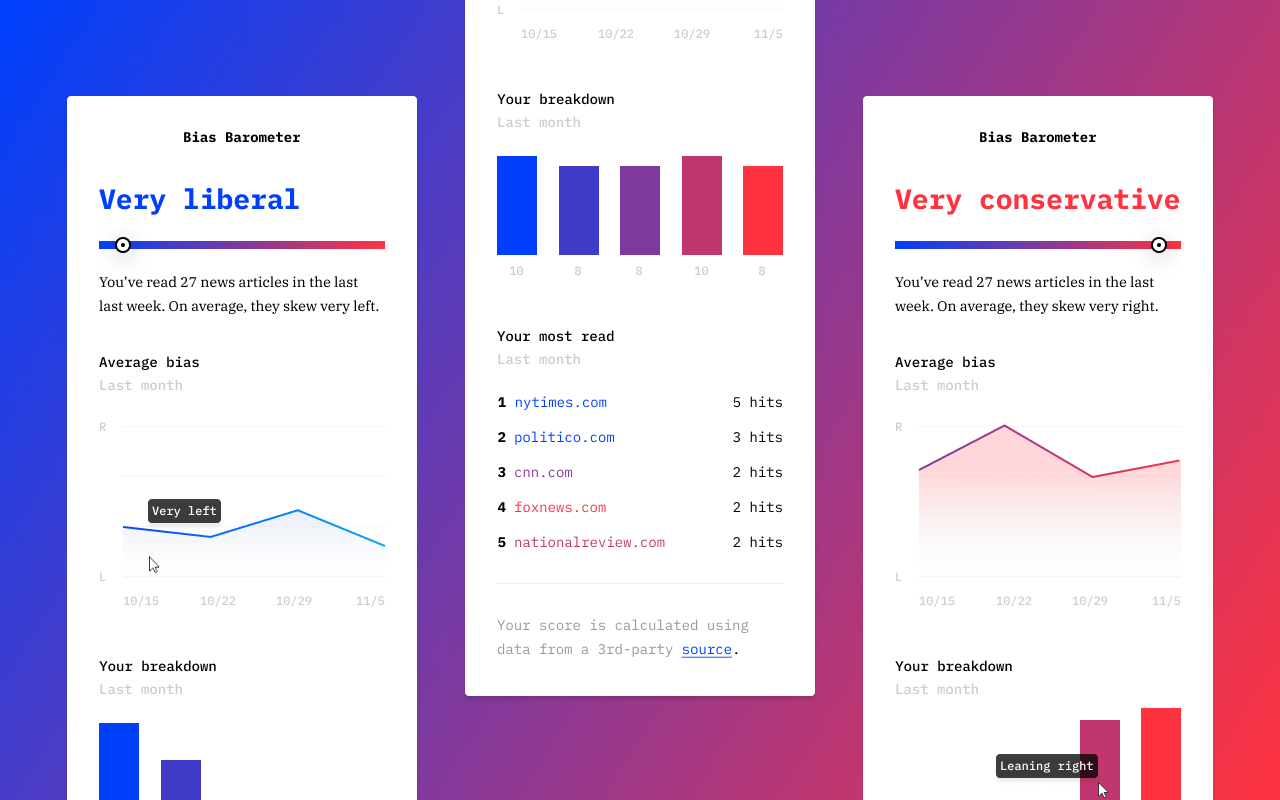Introducing the Bias Barometer

It’s no secret that the news is more polarized than ever. There are echo chambers and filter bubbles, alternative facts and fake news. Most of us have a bias blind spot: we recognize biases in others, but fail to see the impact of biases on our own judgment. Or, as Stephen Colbert put it, “Reality has a well-known liberal bias.” Greg Greiner and I are launching a little experiment to explore how we might reduce the size of this blind spot. It’s a Chrome extension called Bias Barometer, and it’s designed to help you better understand the bias of your news diet.
How does it work? Download the extension, and it will start learning where you get your news. Each news article you read is given one of five ratings: very liberal, liberal, neutral, conservative, or very conservative.
We’re pulling data from an organization called AllSides, which evaluates each news source using a combination of reader surveys, community feedback, and third-party data. The Bias Barometer shows your average rating over the last week, a graph of your bias over time, and a ranking of your most-visited sources. We’ll also add a little badge to the Bias Barometer icon that indicates the rating of the page you’re currently visiting.
How do you get unbiased bias ratings? As AllSides explains, this bias rating “is not accurate — there is no such thing as an accurate measure of media bias — but it does provide readers a sense of the political leanings of the source.” Our hope is that a little bit of self-awareness will help people remember their biases and maybe even encourage them to explore other viewpoints. It’s not bad to have a bias. Everyone does. What’s dangerous is forgetting that your opinion is just one of many and turning a blind eye to perspectives outside your bubble.
Are you collecting my browsing data? No. We’re committed to respecting your privacy, and we don’t store any of your browsing data on a server. All the graphs are drawn using data on your local machine.
Who else has done something similar? There have been been a few interesting attempts at addressing this problem. In 2016, the Wall Street Journal released Blue Feed, Red Feed — a tool that lets people see liberal Facebook and conservative Facebook side by side. BuzzFeed has an “Outside Your Bubble” module at the bottom of some of their articles, which links to opposing viewpoints. The KIND Foundation has a tool called Pop Your Bubble, which introduces Facebook users to people outside their filter bubbles. More to come.
Get the Chrome extension here. If you have any feature requests or feedback, feel free to send me a tweet.
And if you found this interesting, you might also like our other extension Time Well $pent.